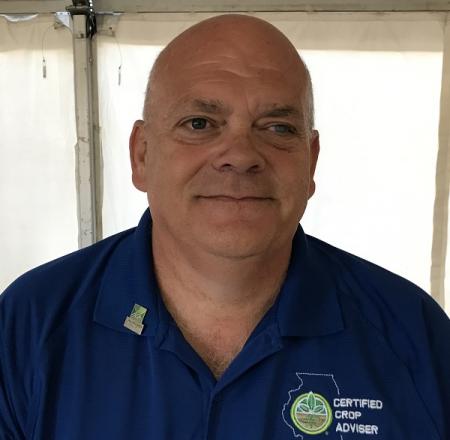ILSOYADVISOR POST
Agronomy: Growing Continuous Beans: A Southern Illinois Perspective
As we are in the middle of planning the 2016 crop, I am getting a few questions about beans following beans. This is something we have done—off and on—for many years to reduce cost per acre of inputs and hopefully improve cash flow. It can work but it is a tricky proposition. With today’s high seed cost, weed resistance issues and generally less effective genetic disease resistance, it is tougher today than in the past—but not impossible with high management. We will go over some of the primary issues and let you make your own decisions.
The first issue is that continuous season soybeans are much more susceptible to seedling disease. I have found that planting two or more years of soybeans consecutively greatly increase the pressure from Rhizoctonia, Fusarium and Phytophthora seedling diseases. One advantage we have today over years past is seedling vigor and resistance as well as quality of seed treatment. Any of the current, main stream, seed applied fungicide packages will help this quite a bit. In areas of high disease pressure though—3 or more years of soybeans—it may not be enough and you will have to plant a higher population to offset seedling loss. You may need as much as 25 – 40,000 more seeds per acre to make up for early season seedling death.
The second issue is weed management. The farmers that I work with—that are planting 2-3 consecutive soybean crops—are very aggressive in their weed control attitude. As an example: A grower will spray dicamba early in the spring (March 15-April 1) for Marestail control, followed by tillage (a weed killing tillage, not one of those sissy discs). He then sprays a combination of 3-4 modes of action shortly after emergence, say V2 with at least two different residuals. He will continue to monitor closely and only applies glyphosate as a rescue in the second in-crop application. It can work but it takes diligence. You will find tougher weed pressure without that atrazine included in a corn rotation as well.
The third issue is plant health. With today’s fungicides and other stress mitigation aids we can do wonders to reduce in-season stress in the crop. There are really good foliar fungicides out there—you can pick your favorite from a multitude of quality products. I do prefer the dual mode products just for a broader spectrum shot at preventing and controlling foliar disease. We have found that a shot of foliar sulfur with some nitrogen and iron will also help with stress mitigation. Finally, copper is a natural fungicide, so I always make sure that is in the mix as well—it can’t hurt and it’s cheap.
These solutions are what I consider to be the three keys to growing multiple years of soybeans in a row. There are many other variables as well. There are some varieties that are better suited than others—look for strong SCN, SDS, and PRR (Phytophthora root rot) scores when choosing a variety to plant following soybeans. And I can’t say enough—find a good seedsman—they are still your most valuable asset.
Continuous beans can be done. It takes much more management than a more conventional rotation and it really isn’t that much cheaper today than a corn/ soybean rotation if you include the inputs. I still have a few growers that do it successfully but they aren’t cutting corners. The days of planting beans, spraying with glyphosate once and then harvesting a clean crop are gone here in southern Illinois. But it can still be a viable option to a high input dollar corn crop.
Mike Wilson is a Specialty Products Marketing Coordinator at Wabash Valley Service Company. For over 20 years, he has been working with farmers in ten counties in southeastern Illinois to improve economic yield in soybeans, corn and wheat. Mike has been a CCA since 1994 and is looking forward to being a part of the Soy Envoy program.





Comments
Add new comment